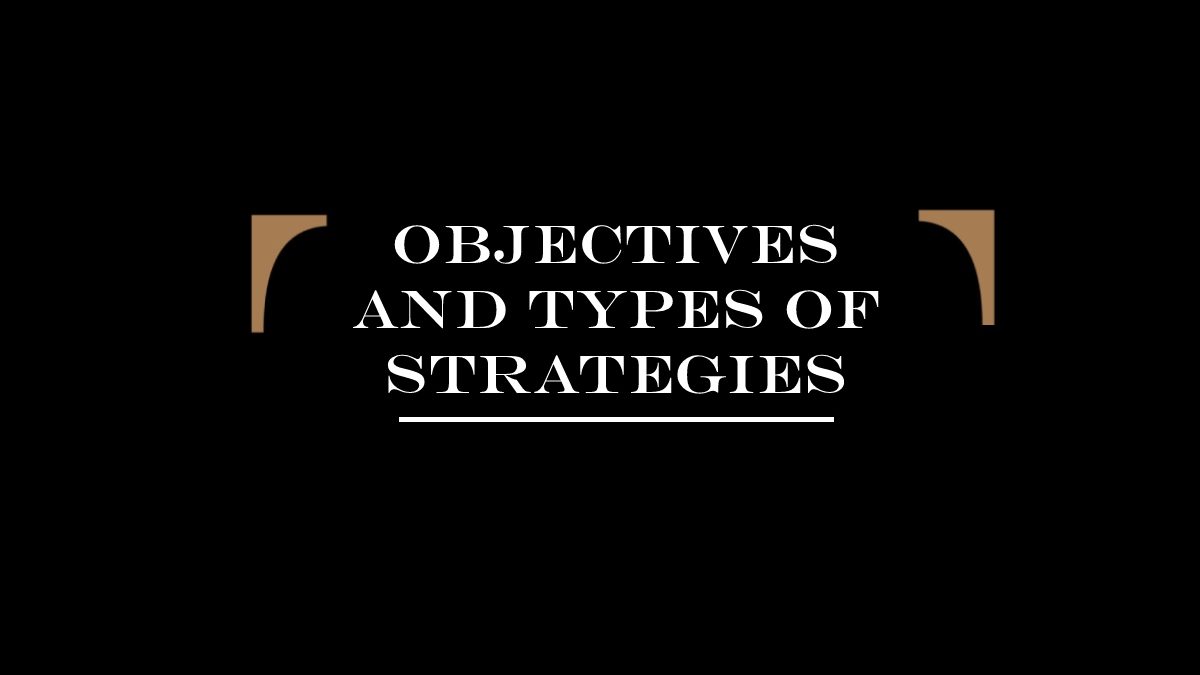Objectives and Types of Strategies- We explain a company’s objectives and types of strategies, what types of each exist, and their differences.
Strategies are action plans that allow you to achieve goals.
Table of Contents
Objectives and Strategies Types
In the business world, we often discuss the objectives set and the strategies necessary to achieve them. However, there may be a margin of misunderstanding regarding each concept that we must first of all resolve.
First, an objective is an point of arrival, whether long, medium or short term. Then, it is a task we want to fulfill, a goal that we want to achieve, which is why they are usually based, in the case of companies, on their mission, vision, and values, that is, on what they want to become.

Objective Types
There are different ways of classifying objectives, depending on what they follow. For example, it is possible to differentiate between short, medium, or long-term goals, depending on how close their fulfillment is in time: close, medium or distant. But in each of these cases, one can also distinguish between:
- Essential objectives are fundamental to the organization, that provide it with meaning and are its goal, without which the company would lack purpose and would not know where to go. So, for example, a timber company may have the critical objective of successful the local timber niche.
- Instrumental objectives must be met to move towards the achievement of the essential ones, that is, secondary. Partial objectives that are not part of the business foundation but without which it would be impossible to meet the vital goals. For example, the timber company in the previous model will have to deal with the sustainability of timber to grow until it fills the niche in the region.
Instead, the strategies are how the organization plans to meet those objectives: The action plan or the road map towards it. This thought is essential to design the company’s procedure since it makes no sense to propose actions that are not part of any strategy, that is, that do not lead to the fulfillment of any of the corporate objectives.
Types of Strategies
As for the objectives. The strategies types can be very diverse and varied, depending on what purpose they pursue or what type of actions they intend to develop. Thus, it is possible to speak of:
- Integration strategies, when they offer actions that tend to control distributors, suppliers, or the competition. That is when they promote business dominance.
- Intensive strategies, when they seek to improve the company’s position through intensive plans for market penetration. Market development, or product development, are the strategies that search to increase business power with current products.
- Diversification strategies. When they raise the need for safety measures or protect the company’s assets, improve its attractiveness against the rest of the market. These self-protective actions include divestment, risk-sharing, shrinking, and insolvency strategies.
- Growth strategies, when they pursue to seize a favorable moment to increase the company’s sales, profits, and markets.
- Stability strategies when focusing on the company’s current situation and thus preserve its size and contour of business.
- Reduction strategies, when methods of economizing the company are proposed to correct poor performance. Either by making cuts, reorienting the company, cutting distribution costs, etc.
Understanding the objectives and strategies types is key to proper organizational performance and is essential when making important decisions. But, as the proverb sums it up. The wind is never favorable for those who do not know where they are going.
Conclusion:
Your method of achieving a goal is called a strategy. A measurable action you do in order to accomplish a plan is called an aim. An instrument you employ to pursue an aim connected to a strategy is known as a tactic.

